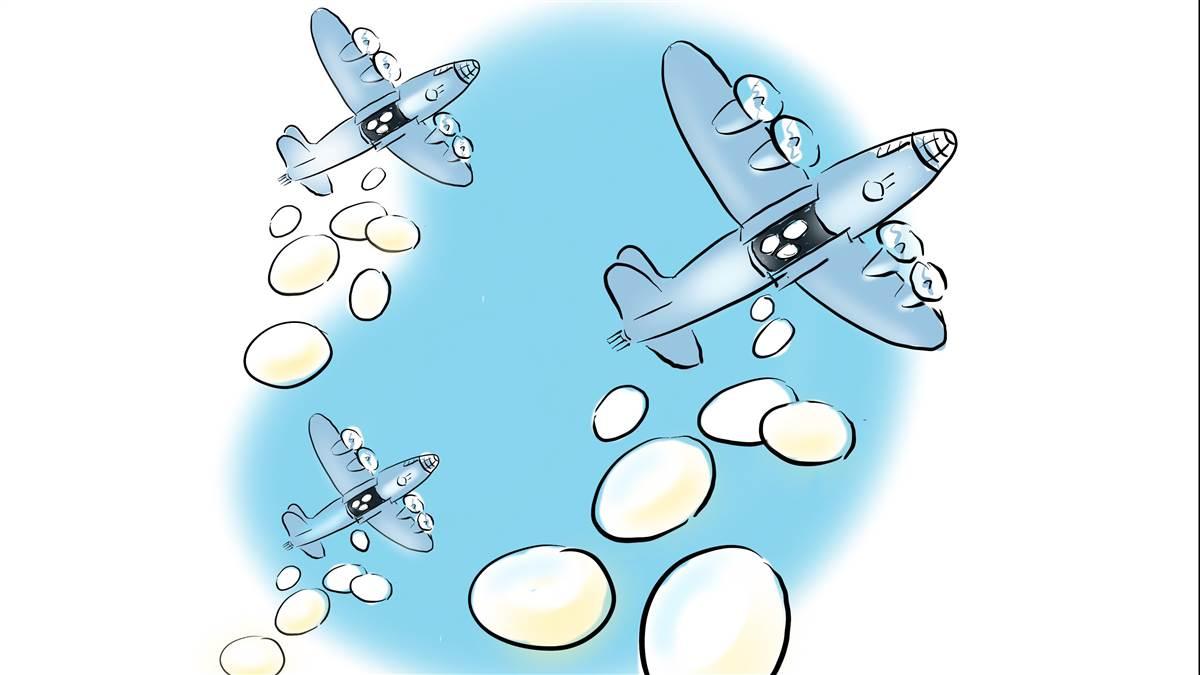Test Pilot

2. During World War II, military pilots developed a colorful “slanguage.” Define the following slang expressions:
A. blanket drill
B. Chinese landing
C. flying the iron beam
D. French landing
E. geese
F. laying eggs
G. pulpit
H. roll up your flaps
I. rug dance
J. shot down in flames
K. sugar report
3. From reader John Schmidt: Why was a Grumman Gulfstream II used to make straight-in landing approaches from 20,000 feet with its main landing gear down and its jet engines operating in reverse?
4. True or false? An airplane with a thick wing is more likely to accrue wing ice (during icing conditions) than the same airplane with a thin wing.
5. From reader Tom Travis: When a pilot dies, it is said that he has “flown west.” What is the origin of this well-known expression?
6. Under what circumstances should a pilot start an engine with the fuel valve in the Off position?
7. What general aviation airplane was designed after a World War II fighter aircraft?
8. The wind over the mid-latitudes is generally westerly. What is the general wind direction over the high and low latitudes in the Northern Hemisphere?
Test Pilot Answers
1. When moistened, the cards in these special decks could be peeled apart to reveal hidden maps of top-secret escape routes.
2. (A) sleeping; (B) landing one-wing low; (C) following railroad tracks; (D) keeping the tail high for as long as possible after a wheel landing in a taildragger; (E) an enemy bomber formation; (F) dropping bombs; (G) cockpit; (H) relax and stop talking; (I) standing nervously in the commander’s office while being chastised; (J) jilted by a girlfriend; (K) a letter to or from a girlfriend.
3. Called the shuttle training aircraft, or STA, the modified G-II was used to duplicate the space shuttle’s steep, high-speed approach profile and handling qualities, thus allowing pilots to practice simulated shuttle landings before attempting to land an orbiter.
4. False. Thin objects with small-radius leading edges accrue ice more readily than do objects with a large radius. This is why antennas, windshield wipers, and the like usually accrue ice before the airframe does.
5. During the Great War (World War I), the bodies of many fallen pilots were shipped home, west from Europe to the United States. It was said that they had “flown west.” (This question was answered incorrectly in the February 2005 "Test Pilot" quiz.)
6. When hand-propping the engine without anyone in the cockpit. This allows enough time to get in the airplane and turn on the valve before the engine runs out of fuel. This reduces the possibility of a runaway airplane. Be sure that the airplane is tied down and chocked before starting.
7. North American Aviation borrowed the lines and sliding canopy of its P–51 Mustang to develop its postwar Navion (later built by Ryan Aeronautical). The Navion, however, did not have quite the same performance.

